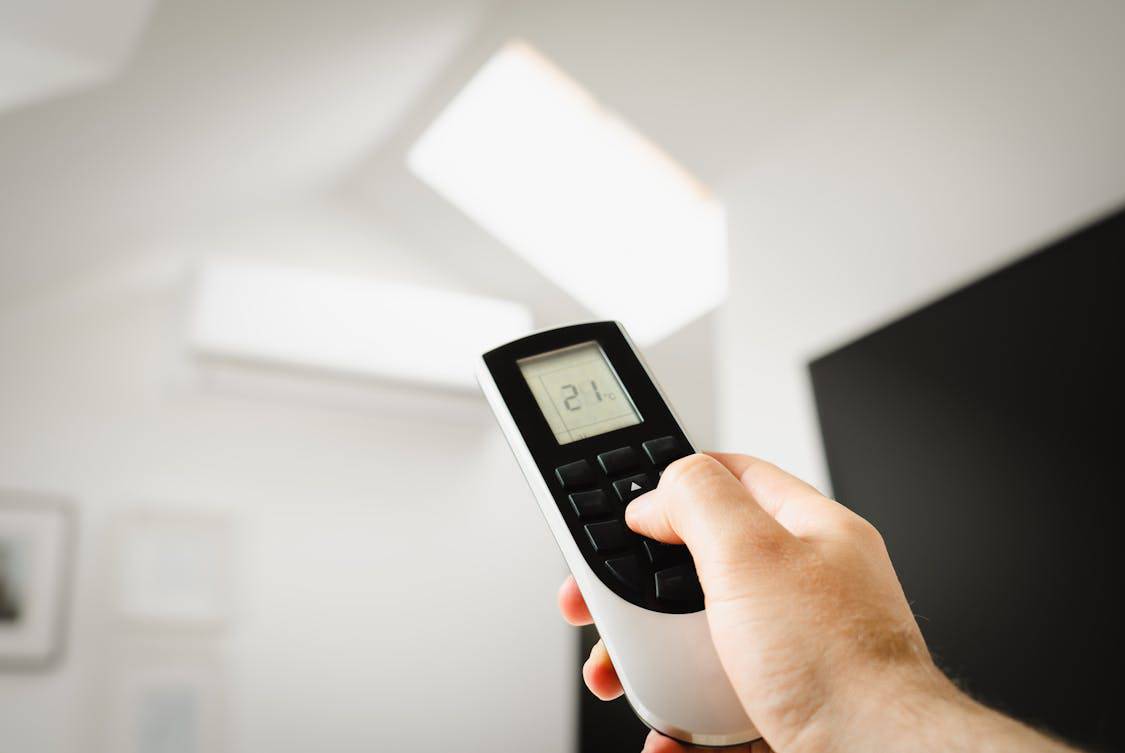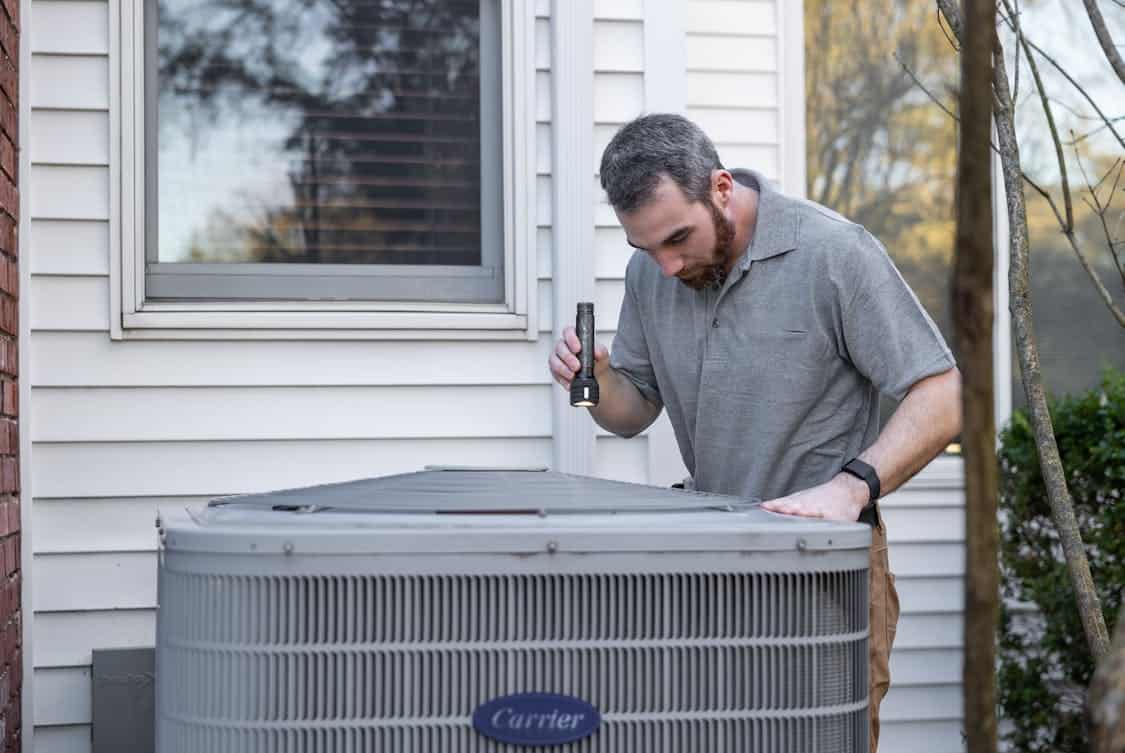Why Isn’t My Air Conditioner Cooling? Find Out Here

An air conditioner that blows warm or lukewarm air can turn a comfortable home into an unwelcome sauna, and the cause is often less mysterious than it feels. Small faults, routine wear, or a missed maintenance task can all tip a healthy system into poor performance, and spotting the right clue makes a big difference.
Below outlines common reasons a unit won’t cool and points you to sensible checks and next steps, written so a homeowner can follow along.
Thermostat Settings And Calibration
A thermostat that’s set wrong or has drifted off calibration can keep the compressor idle while the blower runs, giving the impression the system is working but not cooling. Check the mode, the set temperature relative to room temp, and whether the fan is set to “on” rather than “auto,” since a constant fan can circulate warm air.
Dead or weak batteries, or a thermostat that sits in direct sun or near a heat source, will skew readings and lead to odd behavior. Swapping batteries and moving a portable thermostat for a quick test is an easy first step.
Clogged Air Filters
Dirty filters choke airflow and force the blower to work harder, which cuts cooling capacity and can lead to ice forming on the evaporator coil. A heavily clogged filter is like breathing through a straw; the system can’t pull enough return air to make cold across the coil.
Replace common disposable filters every one to three months, and check washable filters for grime build-up that needs soap and water treatment. Clean airflow often restores normal cooling and keeps parts from wearing out early.
Refrigerant Leaks And Low Charge
Low refrigerant shows up as weak cooling, long run times, and sometimes a hissing sound or oily residue near connections; this gas is what actually carries heat out of your home. Systems need the correct charge to move heat efficiently, and a leak reduces pressure so the evaporator can get so cold it freezes up.
If you’re unsure how to pinpoint these issues, calling a trusted technician who can solve common aircond problems will ensure the leak is fixed safely and your cooling restored quickly.
Handling refrigerant is regulated and generally requires a licensed technician to locate leaks, repair them, and recharge the system to spec. If cooling has degraded slowly over seasons, a leak and low charge are a likely culprit.
Dirty Condenser Coils Or Outdoor Unit Problems

The outdoor condenser is the part that releases heat to the yard air, and when those fins are clogged with leaves, grass, or grime the unit can’t dump heat effectively. Poor heat transfer forces the system to run longer and struggle to reach set temperatures, with higher electric draw and wear on components.
Trim vegetation back, remove debris, and straighten bent fins carefully; turn power off at the breaker first to avoid a nasty surprise. A thorough coil clean makes a visible difference and can be the fix that brings cool air back to life.
Frozen Evaporator Coils
A thick layer of ice on the evaporator coil will stop air from passing through and turn cooling into a trickle, often with water dripping or a sudden loss of cool output when the ice melts. Freezing usually happens when airflow is restricted or refrigerant pressures are abnormal, and it creates a self-reinforcing loop where the system can’t recover while the ice remains.
Power the unit down to let the ice thaw and check filters, vents, and blower operation; continued freezing points to a deeper issue needing a pro. Quick action prevents a ruined compressor and keeps a small problem from ballooning.
Faulty Compressor Or Start Capacitor
The compressor is the heart of the refrigeration loop, and if it’s failing or its start capacitor is weak the system won’t compress refrigerant well and cooling plunges. Symptoms include humming, clicking, or the unit refusing to latch into a steady cycle; sometimes the outdoor unit attempts to run but stalls repeatedly.
Replacing a capacitor is a relatively low-cost fix and often brings a dead unit back to life, while compressor failure is more serious and can be pricey to address. A trained technician can test components safely and explain whether repair or replacement makes the most sense.
Ductwork Leaks And Poor Insulation
If conditioned air leaks into an attic or crawlspace via gaps in ductwork, your rooms will never feel truly cool even though the system is running flat out. Large or multiple leaks mean a good portion of cooled air is a loss, and under-insulated ducts worsen the problem by letting that air warm up before it reaches living spaces.
Sealing joints with mastic or foil tape and adding insulation where ducts run through hot areas tends to deliver immediate benefit and steadier room temps. Think of leaky ducts as holes in the pipeline: fix them and the flow improves fast.
Incorrect System Size Or Faulty Installation
An oversize unit will short-cycle, switching on and off too quickly without running long enough to dehumidify effectively, leaving rooms clammy and uncomfortable even if the thermostat reads close to the setpoint. An undersized unit, on the other hand, labors continuously and still fails to reach target temperatures on the hottest days.
Poor installation choices such as wrong refrigerant charge, improper airflow, or bad refrigerant line routing can turn a correctly sized piece of equipment into a poor performer. If cooling problems trace back to day-one behavior, installation and sizing are areas to interrogate.
Electrical Problems And Control Failures
Loose wires, a tripped breaker, a failed contactor, or a malfunctioning control board can interrupt the relationship between indoor and outdoor components and leave the blower running but the compressor silent. Safety switches on drip pans, float switches, or high-pressure cutouts will keep a system offline until conditions are safe, so a single fault can ripple through and stop cooling.
Check the breaker panel for obvious trips and look for scorch marks, unusual smells, or clicking relays, then call a technician for anything electrical beyond basic checks. Electrics are not forgiving of amateur fixes, and a pro will have the tools to diagnose faults without turning a minor issue into big trouble.
Faulty Fans And Motors
Both the indoor blower and the outdoor fan must spin at the right speed to move air through the system and pull heat out; worn motors, seized bearings, or debris in the fan cage can cut airflow dramatically. A weak or noisy fan reduces exchange of warm and cool air, and motors that are on the way out sometimes draw more power or trip overloads.
Lubrication, cleaning, and replacing worn bearings are common fixes, while motor replacement may make sense for older equipment. Getting the fans back to spec often returns the system to normal cooling performance.
Age, Wear And Deferred Maintenance
Over time, seals harden, lubricants thin out, and tolerances widen, so an older unit simply has less cooling headroom than when it was new and will struggle more under high heat. Regular maintenance—cleaning coils, replacing filters, checking refrigerant, and tightening connections—keeps small faults from snowballing into system failure, and skipping that work accelerates decline.
If repairs come thick and fast, or the unit is old and inefficient, replacing it can be a smarter long-term economic move than patching things endlessly. Aging systems behave like worn-out shoes: they might hold together, but comfort and efficiency suffer.